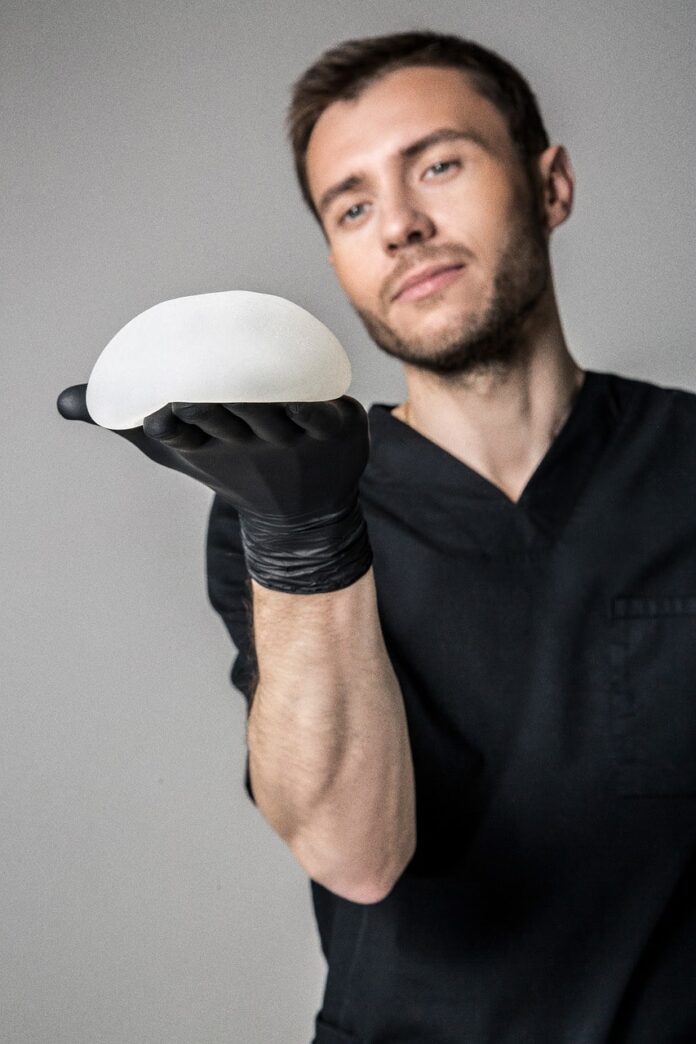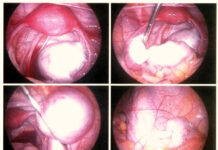Medical experts reveal the most misunderstood medical terms… and explain what they really mean
Brand new research conducted by Qunomedical reveals some of the most misunderstood medical terms patients continue to question.
A team of doctors associated with Qunomedical have compiled a list of frequently misunderstood or unknown medical terms as reported by their patients.
From veneers and rhinoplasty to breast and hair transplants, the experts have debunked misunderstood medical terms, helping to separate ongoing myths from the real facts.
Plastic surgery myths:
- Breast implants don’t need changing
Myth: Patients believe breast implants last a lifetime and don’t need changing or altering.
Debunked: The FDA approved most saline and silicone gel implants that last for anywhere from 10-20 years. Therefore, it is recommended that breast implants need changing every 10-25 years. This is depending on the implant brand and lifestyle of the person.
Bodies change over time due to life changes like pregnancies, weight loss/gain, changes in lifestyle/activeness, and general ageing. Doctors can perform a breast lift and replace your implants to make your breasts look more symmetrical and perky after they begin to droop, helping to maintain the youthful look and shape of your breasts.
- Breast augmentation achieves the same outcome as breast implants
Myth: Patients believe breast augmentation with fat transfer can achieve the same results as breast implants.
Debunked: Breast augmentation surgery is a cosmetic procedure to adjust the size or shape of breasts. This is typically done using either prosthetic implants or fat transfer.
You can achieve a natural result with a maximum of one size bigger. However, it is more about the shape than the size. Often to achieve a desired size, you will need an operation required with breast implantation.
- The difference between an open and close rhinoplasty
Myth: Many patients believe that you can’t achieve a good rhinoplasty result with a closed technique and think they can decide which technique they can have.
Debunked: You can achieve the same results as with open surgery and there are just as many benefits.
One of the advantages is that your surgeon can see the nasal cartilage very clearly during the procedure. Accessing the nasal tissues from below via a columellar incision can help your surgeon see exactly what is going on inside your nose.
When deciding which technique to have, the doctor is the person primarily to decide. This is due to health and safety and ensuring you receive the right treatment according to your medical history.
Once you’ve decided to pursue a rhinoplasty, it’s important to spend time with your doctor to plan the treatment and decide which technique is right for you.
Before scheduling rhinoplasty, your medical history including nasal blockages, surgeries and any medicines you take or any bleeding disorder you may have could be determining factors.
You will also receive a physical exam, where your facial features and the inside and outside of your nose are looked at.
There are a variety of different types of rhinoplasty procedures that are suitable, depending on the reasons and goals for your treatment.
More myths debunked:
Dental myths:
- The longevity of veneers, crowns and implants
Myth: Several patients believe veneers, crowns and implants last a lifetime.
Debunked: Each dental treatment has a different lifespan. Veneers tend to last around 10-15 years; crowns tend to last 15-20 years and implants will last a lifetime.
- The difference between veneers and crowns
Myth: Patients often do not know the difference between veneers and crowns
Debunked: Veneers are thin veneer shells made of ceramic or a ceramic-plastic composite that are bonded to the natural teeth using a special adhesive.
Veneers are typically applied to healthy teeth for aesthetic reasons. This does not mean that there is no preparation of the teeth involved, such as removing decay and placing a filling. However, in general, all teeth undergoing veneer treatment are healthy but need to be reshaped to avoid a bulky appearance.
Veneers can often be used to cover tooth discolorations, small gaps between teeth, and minor misalignments or chipped edges.
A dental crown, however, is an artificially created replica of the natural tooth crown, which is attached to the previously prepared tooth using a special cement. Crowns are used in cases of damaged teeth, such as severe tooth decay or a broken tooth. Such damage cannot be treated with a simple filling or inlays.
The material used may vary in appearance and price, but the goal is the same: to restore the function and feeling of a healthy tooth by placing the dental crown over the damaged tooth.
- Veneers do not include teeth shaving
Myth: Patients continue to think veneer treatments do not include teeth shaving.
Debunked: Veneer procedure includes shaving a small amount of your teeth. Precision tools are used to remove the outer layer of enamel from the teeth being treated.
This process is known as ‘shaving down’ and it’s important to know that your dentist will only shave down enough enamel so that your veneers don’t look bulky once they’re fitted.
- Bone grafting needs to be separate with transplanting implants
Myth: Dental patients think that bone grafting needs to be separate with transplanting implants, with around a six-month gap between the two.
Debunked: Bone grafting is a dental procedure that involves adding volume and density to your jaw. In other words it is a replacement for your bone.
Bone grafting and implant transplantation can be done in one sitting.
Minor bone grafting usually takes one hour to one hour 30 minutes. The gum is normally lifted away from the bone where you need treatment, this way a professional can then see the amount of bone that is needed.
Bone grafting and dental implants are often for people who need a single tooth or several teeth replacing.
It can also be for people who need to replace a denture with a bridge supported on several implants.
- Patients think dental implants are a quick process
Myth: Patients believe dental implants are performed in one sitting and within less than a week they can go back to their normal daily routine.
Debunked: Whilst the placement of a dental implant usually takes around 1-2 hours, it then takes approximately 4-6 months for your gums to heal. Only after this period are the new, real teeth then inserted, during the period in between this, temporary teeth are used.
Therefore, it is recommended to try not to disturb the implanted area with your tongue or fingers and only consume soft food and a high protein diet for the first week after surgery to help with the healing process.
Hair myths:
- Hair graft and follicles are the same
Myth: Several respondents highlighted they thought a hair graft and the follicle are the same thing. However, there is a significant difference between the two.
Debunked: A follicular unit is specifically a naturally occurring, tightly grouped follicle that either occurs individually or in two, three, or four hairs. A graft can be any piece of tissue that contains hair follicles; it could be 10 or 20. All follicular units are grafts, but not all grafts are necessarily follicular units.
Generally, one follicle is one visible hair plus the hair root; a graft is usually composed of more than one follicle.
- Hair transplant vs hairline lowering surgery
Myth: Research reveals a lot of female patients think a hair transplant and hairline lowering surgery are the same thing.
Debunked: Hair lowering, and hair transplantation are different procedures and are ideal for different types of patients as they result differently.
Regarding technique, hair transplants involve the transferring of grafts, whereas hairline lowering is a full procedure. Also known as forehead lowering, hairline lowering surgery is a cosmetic procedure which seeks to “lower” an individual’s hairline, restoring a more youthful appearance.
Hairline lowering is a full plastic surgery treatment that can sometimes require an overnight stay in hospital. It is often for patients with high hairlines, thin hair at the hairline, or their hairline is not even. Patients also often seek hair lowering surgery to counteract a brow that is too large relative to the rest of their face. In this process, the incision is made from one ear to the other meaning the scalp is lowered and slight scars can occur.
Hair transplantation on the other hand is the best option for hairline restoration. During hair restoration, the hair follicles can be transplanted from one part of the scalp to another.
The advantage of this method is that it does not leave a scar on the scalp even if the hair grafts are transplanted or extracted, whereas hair lowering can leave scarring.
- Your head is left fully unshaven with a “no-shave hair transplant”
Myth: Patients believe that no shaving is needed at all when preparing for the “no-shave hair transplant”.
Debunked: It is now no longer necessary to shave your head to have a hair transplant. This is thanks to the evolution of modern hair transplant techniques. The top of the head is left as it is, it is just the donor area whose head is always shaved.
This treatment is appealing because it allows you to hide the hair transplant better. Whilst there is such a thing as a fully unshaven hair transplant, it is an expensive treatment which very few clinics offer due to little success.
Generally, when most clinics refer to no-shave hair transplant, it means only the donor area (back and sides) needs to be shaved. However, this is on a case-by-case basis, as not all patients are eligible.
- Stem cell cloning with hair transplant
Myth: Patients believe stem cell cloning with hair transplantation is when a few hairs are cloned to provide 1000s without having to take from the donor area.
Debunked: Stem cells are used in conjunction with regular hair transplant and aren’t a standalone procedure – as the patient still needs a full donor area.
Stem cell hair transplants use the patient’s own body cells to increase the efficiency of the recipient area – the area of their head in which hair will be transplanted to. The stem cells are injected before the actual hair transplant surgery, not afterwards.
It is important to note that hair stem cell transplant is surgery not approved in the USA and Europe.
- Sapphire, FUE and DHI hair transplant techniques
Myth: Experts reveal they are often asked what the differences are between Sapphire hair transplant, Follicular unit extraction (FUE) and Direct hair implantations (DHI).
Debunked: Whilst they all harvest in the same way, the techniques of the actual implantation differentiate slightly.
DHI and FUE (+ Sapphire FUE) are the same method, however the technique for implanting grafts are different.
Follicular unit extraction (FUE)
With FUE, canal openings/ channel openings are used, so an incision is made with the blade and the grafts are then implanted in a second step using forceps.
This hair transplant involves the transplantation of hair from one area of the body to another. This minimally invasive treatment permanently restores hair in balding or thinning areas.
Sapphire blades (Sapphire FUE) are identical to FUE, however only the blade changes from steel to Sapphire. Sapphire blades are smaller, allowing for a higher density of transplant follicles.
DHI is a version of FUE, however the main difference between the two is how the hair grafts are implanted into the skin. FUE uses small manually cut incisions whereas DHI uses a special pen-like tool to insert the grafts
Help keep news FREE for our readers
Supporting your local community newspaper/online news outlet is crucial now more than ever. If you believe in independent journalism, then consider making a valuable contribution by making a one-time or monthly donation. We operate in rural areas where providing unbiased news can be challenging. Read More About Supporting The West Wales Chronicle

























